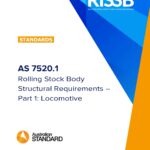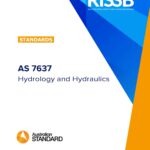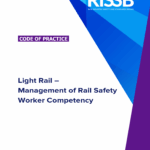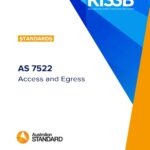22 Jul 2025
RISSB releases new and updated Standards
After undergoing a vigorous standards development process, 10 products were approved by the RISSB Board in June 2025.
Aimed at advancing the safety, efficiency, and sustainability of our rail industry, the Standards have been developed in response to industry incidents, reports and emerging needs, and with the support of ONRSR. They represent a significant opportunity for harmonising standards across the sector.
Implementation of these standards can play an important role in improving interoperability between diverse rail networks, addressing emerging challenges, and enhancing overall operational performance.
Here’s a brief overview of five of the newly released products:
 Guideline – Monitoring of Fatigue Risk Management Programs – Work Scheduling and Rostering
Guideline – Monitoring of Fatigue Risk Management Programs – Work Scheduling and Rostering
Fatigue is a significant risk that all Rail Transport Operators have to manage as part of their Safety Management System. This new Guideline has the support of ONRSR and looks at Fatigue Risk Management Programs, with the intention of providing guidance on:
-
- A consistent approach to monitoring fatigue risk management programs as required by the Rail Safety National Law and WHS legislation.
- Identifying key data sources and metrics for analysis.
- How to continuously improve fatigue monitoring programs.
 AS 7520.1 – Rolling Stock Body Structural Requirements – Part 1: Locomotive
AS 7520.1 – Rolling Stock Body Structural Requirements – Part 1: Locomotive
- Specifically detailing requirements for crew areas to maintain a safety cell during incidents.
- Improving the survivability of train crew during and after an incident.
- Updating crashworthiness requirements primarily for rollover events or level crossing incidents.
 AS 7637 – Hydrology and Hydraulics
AS 7637 – Hydrology and Hydraulics
Flood damage to railway infrastructure is a significant safety risk and an impediment to growing freight volumes on rail. This Standard promotes best practice in hydrology and hydraulics planning/design/build that are critical to driving better safety outcomes and rail network infrastructure resilience.
It specifies the requirements for adequate planning and design in an environment of increasingly extreme weather events, and the development of a Flood Management Plan and Emergency Response Plan to mitigate flood risk to railway infrastructure, rail traffic and personnel.
 Code of Practice – Light Rail – Management of Rail Safety Worker Competency
Code of Practice – Light Rail – Management of Rail Safety Worker Competency
 AS 7522 – Access and Egress
AS 7522 – Access and Egress
The other approved products are:
- AS 7515 – Axles
- AS 7516 – Axle Bearings
- AS 7532 – Audible Warning Devices
- AS 7715 – Train Detection
- Code of Practice – KPIs for Rail Infrastructure Performance – Track and Civil
These products not only set a higher standard for safety and operational effectiveness but also underscore RISSB’s ongoing commitment to supporting the rail industry in its pursuit of continuous improvement.
By equipping stakeholders with updated tools and harmonised standards, RISSB is helping to ensure a safer, more efficient, and sustainable future for Australia’s rail network.
You can find details about the products here https://www.rissb.com.au/products/


